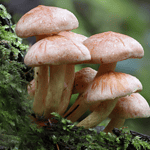Introduction
In a world facing increasing concerns over water scarcity, the need for sustainable and water-wise gardening practices has become paramount. Drought-tolerant plants offer a practical solution, not only reducing water consumption but also contributing to lower maintenance requirements. In this article, we’ll explore the benefits, types, best practices, and design considerations for incorporating drought-tolerant plants into your garden.
Benefits of Drought-Tolerant Plants
Drought-tolerant plants have gained popularity for their numerous advantages. They not only thrive with minimal water but also require less maintenance, making them an eco-friendly and practical choice for any garden. The reduced water consumption directly contributes to environmental conservation, making a positive impact on our planet.
Types of Drought-Tolerant Plants
- Succulents and Cacti
- Known for their water-storing abilities.
- Varied shapes and sizes for creative landscaping.
- Native Plants
- Adapted to local climate conditions.
- Support local ecosystems and biodiversity.
- Mediterranean Plants
- Resilient in hot and dry climates.
- Vibrant colors and aromatic foliage.
- Adapted Perennials
- Hardy plants that return year after year.
- Low maintenance and diverse in appearance.
Best Practices for Water-Wise Gardening

Achieving a water-wise garden involves more than just choosing drought-tolerant plants. Proper soil preparation, mulching techniques, strategic watering, and grouping plants with similar water needs are essential components. By understanding these practices, gardeners can create thriving landscapes that conserve water and flourish with vitality.
Designing a Drought-Tolerant Garden
When designing a water-wise garden, considerations like color, texture, and plant grouping play a crucial role. Thoughtful planning not only enhances visual appeal but also creates microclimates within the garden, optimizing conditions for different plant species.
Common Mistakes to Avoid
- Overwatering Tendencies
- Recognizing signs of overwatering.
- Adjusting watering schedules accordingly.
- Inappropriate Plant Selection
- Understanding each plant’s water needs.
- Researching before adding new species to the garden.
- Lack of Mulching Awareness
- Importance of mulching in water retention.
- Choosing the right type and thickness of mulch.
Case Studies
Exploring successful water-wise gardens and transformative experiences inspires those considering a shift toward sustainable gardening practices. Real-life examples demonstrate the feasibility and beauty of drought-tolerant landscapes.
Gardening Challenges in Arid Regions
Addressing extreme conditions in arid regions requires innovative solutions. From choosing the right plants to implementing water-saving technologies, overcoming challenges in water-wise gardening is possible with strategic planning and local adaptation.
Sustainable Watering Technologies
- Drip Irrigation Systems
- Precise water delivery to plant roots.
- Water efficiency and reduced wastage.
- Rainwater Harvesting
- Collecting rainwater for garden use.
- Sustainable and eco-friendly water source.
- Smart Watering Tools
- Utilizing technology for efficient watering.
- Automated systems based on weather and soil conditions.
Community Initiatives
Promoting water-wise gardening extends beyond individual efforts. Local communities and government support play a pivotal role in encouraging sustainable practices. Initiatives that promote awareness and provide resources contribute to the collective impact of water conservation.
Inspiring Stories
- Individuals Making a Difference
- Personal journeys towards sustainable gardening.
- Overcoming challenges and inspiring others.
- Communities Embracing Sustainable Practices
- Collective efforts for a greener future.
- Shared experiences and benefits of water-wise communities.
Future Trends in Water-Wise Gardening
The future of water-wise gardening holds exciting possibilities. Technological advancements, global awareness, and collaborative initiatives are shaping a landscape where water conservation is at the forefront of gardening practices.
Tips for Beginners
For those new to water-wise gardening, starting with easy-to-grow plants and gradually transitioning to more drought-tolerant practices is advisable. Patience and observation are key as your garden transforms into a thriving, sustainable oasis.
Expert Insights
Gaining insights from horticulture specialists and experienced gardeners provides valuable tips for success. Practical advice, learned through years of hands-on experience, can guide both beginners and seasoned gardeners towards creating and maintaining a flourishing water-wise garden.
Conclusion
In conclusion, embracing drought-tolerant plants for water-wise gardening not only conserves water but also creates vibrant, sustainable landscapes. By understanding the benefits, types, best practices, and design considerations, individuals can contribute to a more eco-friendly future while enjoying the beauty of their gardens.
FAQs (Frequently Asked Questions)
How do I know if a plant is drought-tolerant?
Look for plants native to arid regions or those labeled as drought-tolerant at nurseries.
Can I create a colorful garden with drought-tolerant plants?
Absolutely! Many drought-tolerant plants come in a variety of vibrant colors.
What is the role of mulching in water-wise gardening?
Mulching helps retain soil moisture, suppress weeds, and regulate soil temperature.
How often should I water my drought-tolerant garden?
Watering frequency depends on factors like soil type, weather, and plant needs. Adjust based on observation.
Latest Posts
- What Types of Lettuces Can You Grow?

- How to Plant Onion Seeds for Maximum Germination

- How to Plant Parsnip Seeds for Maximum Germination

- How to Plant Mushroom Seeds for Maximum Germination

- How to Plant Lettuce Seeds for Maximum Germination

- How to Plant Kale Seeds: A Step-by-Step Guide to Maximum Germination Success!

Additional Information
https://en.wikipedia.org/wiki/Drought_tolerance
https://en.wikipedia.org/wiki/Category:Drought-tolerant_plants




